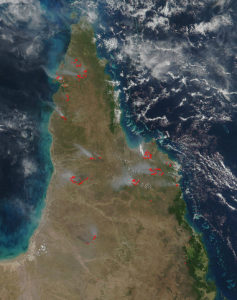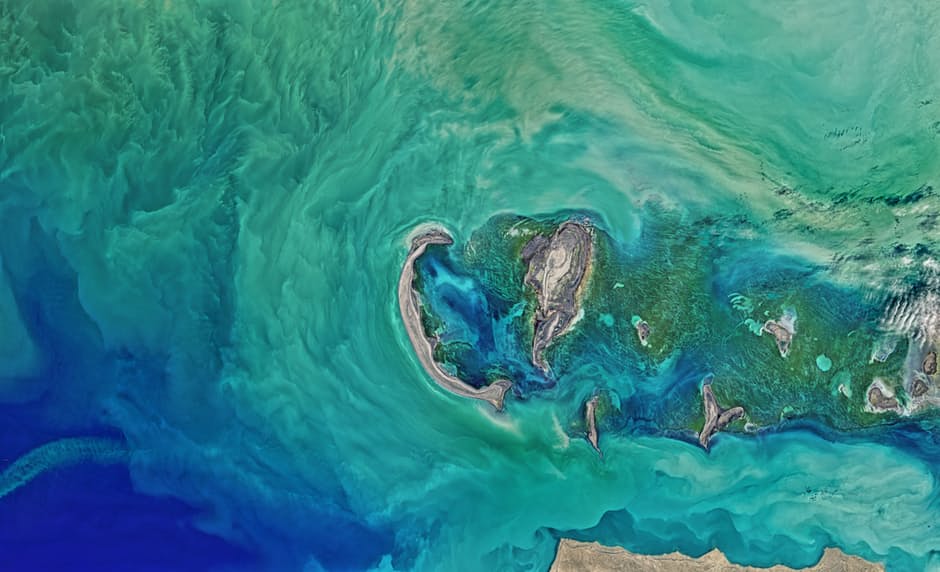Predictive Radar Technology Provides Insight on Weather Patterns and Upcoming Storms
A number of environmental issues continue to grow in Australia, as well as the South Pacific Islands.
Larger countries, such as the United States and Australia produce a much larger carbon footprint, adding to the sea levels rising around coastal areas.
The National Oceanic Atmospheric Administration reported:
‘Global sea level has been rising over the past century, and the rate has increased in recent decades. In 2014, global sea level was 2.6 inches above the 1993 average—the highest annual average in the satellite record (1993-present). Sea level continues to rise at a rate of about one-eighth of an inch per year.’
Climate change also creates longer droughts, and an increase in the intensity of storms across the globe.

Aerial shot of Australia forest fires. Photo by: NASA image courtesy Jeff Schmaltz LANCE/EOSDIS MODIS Rapid Response Team, GSFC.
The Guardian reported:
‘A poll of 2,000 people conducted by the Climate Institute found that 82% of respondents in rural and regional Australia and 81% of those in capital cities were concerned about increased droughts, flooding and destruction of the Great Barrier Reef due to climate change, and 78% of all respondents were concerned there would be more bushfires.’
In the aerial photo of the coastal region to Australia, NASA shows with red dots where bushfires are taking place. NASA reports that Australia’s forest fires are man made, but I can see where in a dry climate that these fires can get larger than expected.
Currently, Australia and many industrial nations, face the transition of creating new jobs with renewable energy, and shifting away from coal and gas powered industries. The Guardian shows that Australia has decreased their carbon emissions, but also have to try and compete with other industrial countries that are using coal and gas for the cost.
Overall, when major countries use low-cost fuel, it costs more by the side effects it causes within climate change. One of these side effects is the ocean level rising.
Within two decades renewable energy will replace coal and gas because it will be cheaper. The goal that each major country is trying to accomplish is setting up their own sustainable energy plan to reduce costs on their country’s budget. As voters and consumers, it is important to support clean energy projects to help countries in the South Pacific stay afloat.
During major storms it is key to listen to weather stations to keep informed on where to stay and how to relocate if necessary.
Watch over two videos below showing the impact of climate change in the South Pacific Islands, and in Australia.
This data displays the countries that search for climate change the most often. It is noted that coastal countries, and areas that experience serious droughts are more interested in this subject. The goal is to push for clean energy through 2030 to hopefully be able to curb global warming as much as possible.




